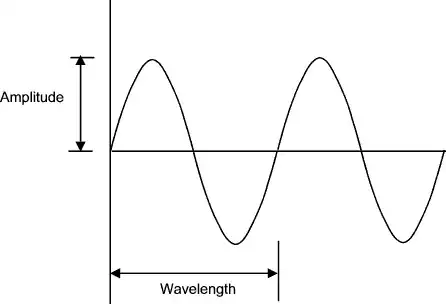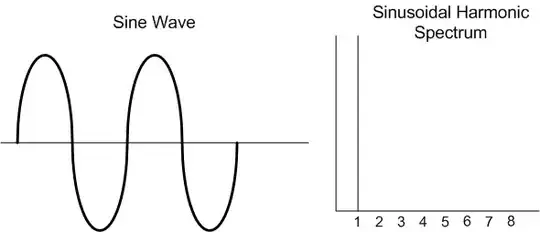The short story is this: that \$rad\$ is a ghost.
Here's why: in the SI angles can be considered either fundamental quantities - with their own unit (the radian) - or dimensionless quantities as ratios of lengths (and, for solid angles, as ratios of areas). But both cases must respect dimensional homogeneity in the series expansion of functions that employ angles.
Dimensions and units
In the former case (angles as fundamental quantity with their own unit), since the argument of any analytic function - such as exponential and trigonometric functions - HAS TO BE dimensionless (because otherwise one would end up mixing apples with oranges), a conversion factor HAS TO BE introduced to leave only the magnitude of the angle. In the same way chemists have pressures inside logarithms by dividing by a reference pressure, one should be using a unit angle (that some, like Gibbins (1) call \$ \beta_0 \$) that will divide angle quantities wherever they appear. This will make the [\$\alpha\$] dimension disappear and from the argument of any analytic function, avoiding the orange-apple paradox.
In the latter case (angles as ratios, hence dimensionless), the paradox is avoided from the start since angles are pure numbers to begin with. Some author (for example Szirtes (2)) prefer to view dimensionless quantities as quantities with dimension \$[1]\$, so that the any power of such quantity will still have dimension \$[1]^n=[1]\$ (as opposed to dimension \$[\alpha]^n\$ , thus saving the day and restoring homogeneity.
In practice, people will not use the conversion factor \$\beta_0\$ but will still consider angles dimensionless while using the unit \$rad\$ for the following reason illustrated by the Bureau International des Poids et Mesures (BIPM):
In practice, with certain quantities, preference is given to the use
of certain special unit names, or combinations of unit names, to
facilitate the distinction between different quantities having the
same dimension. When using this freedom, one may recall the process by
which the quantity is defined. [...] The SI unit of frequency is given
as the hertz, implying the unit cycles per second; the SI unit of
angular velocity is given as the radian per second; and the SI unit of
activity is designated the becquerel, implying the unit counts per
second. Although it would be formally correct to write all three of
these units as the reciprocal second, the use of the different names
emphasises the different nature of the quantities concerned. Using the
unit radian per second for angular velocity, and hertz for frequency,
also emphasizes that the numerical value of the angular velocity in
radian per second is 2 pi times the numerical value of the
corresponding frequency in hertz.
Excerpt taken from SI Brochure: The International System of Units (SI) [8th edition, 2006; updated in 2014]. Emphasis mine.
But all trig, exp and log functions need to have dimensionless arguments. Period.
So, if you use dimensionless angles, \$\omega\$ will have dimension \$[T]^-1\$ and unit \$s^{-1}\$; while if you use angles of dimension \$[\alpha]\$ and unit \$rad\$, by dividing by the conversion factor \$\beta_0\$, you will still end up with the same result.
The 'ghost' \$rad\$ you put 'as a reminder' in the \$\omega\$ case is there to remember you that there is a \$2 \pi\$ that derives from the fact that trig functions are periodic of period \$2 \pi\$.
The \$2\pi\$ factor
And why in one case you have 1 and in the other \$2 \pi\$?
Because, in one case the solution of your problem is a real exponential that has no periodicity, while in the other you are basically doing frequency analysis which rely on imaginary exponentials which are in essence trigonometric functions of period \$2 \pi\$. The \$2 \pi\$ has nothing to do with \$\tau\$, it is instead introduced as the angular frequency of the generic (co)sine wave used as a stimulus in frequency analysis.
(I'll be back with a few drawings).
I would add that for the impulse (and step) response, we are using a real-valued exponential - so there's really no 'period' here since the function is not periodic. When you dump in that i or j in the exponential stimulus to your RC network, you enter another Realm where, Euler taught us, a complex (actually imaginary) exponential turns into trigonometric functions. And as we all know, trig functions are periodic of period \$2 \pi\$, so we need a rescaling to fit them to our desired periods. That's were the \$2 \pi\$ come from.
Bandwidth and time constant (rise time)
As a side note, the numerical relationship between rise time and bandwidth has its roots in the addition of a \$2 \pi\$ factor. In a single pole RC network the step response rise time is linked to the time constant \$\tau\$ by:
\$ t_{r} = ln(90/10) \tau \approx 2.2 \tau\$
but \$\tau\$ is linked to the cutoff angular frequency of the frequency response by \$ \tau = 1/\omega \$ and \$ \omega = 2\pi f \$, so:
\$ t_{r} \approx 2.2 \tau = \frac{2.2}{\omega} = \frac{2.2}{2 \pi f} = \frac{0.35}{f} \$
Quite a familiar result.
References
(0) Bureau International des Poids et Mesures (BIPM)
(1) J. C. Gibbins, "Dimensional Analysis", Springer (2011)
(2) T. Szirtes, "Applied Dimensional Analysis and Modeling" 2nd edition, Elesevier (2007)


